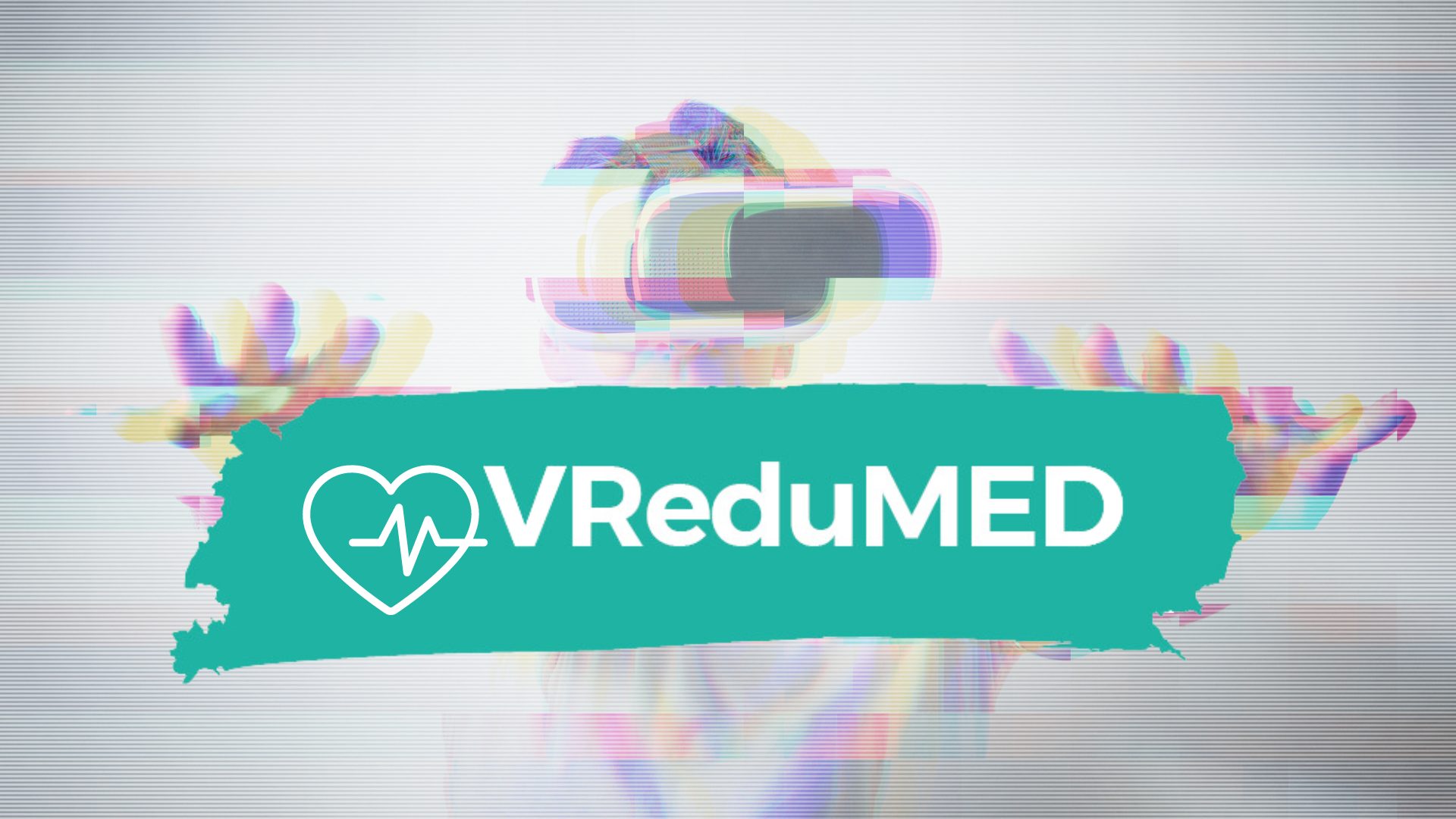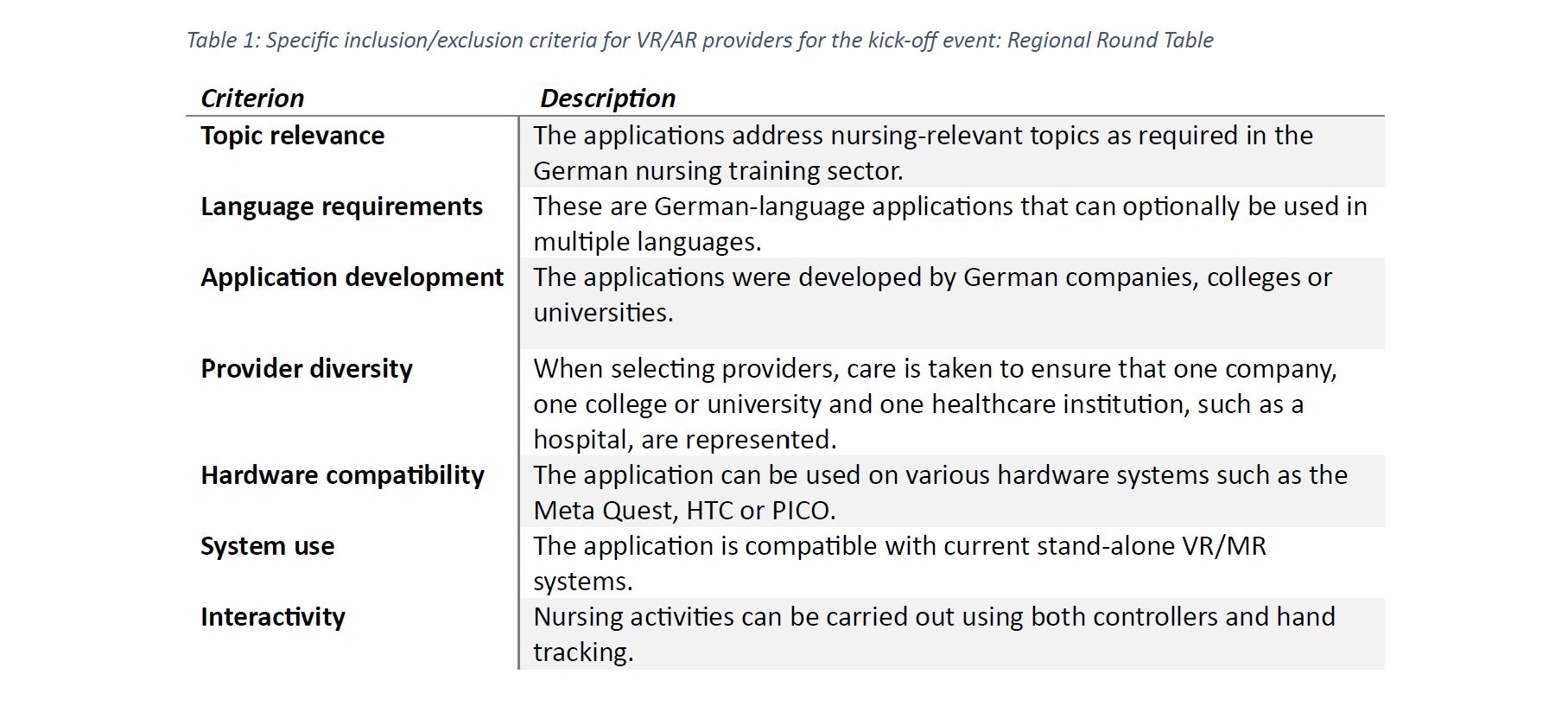
The selection of participants and exhibitors for the regional round table was carried out by the researchers at OTH Regensburg. Potential VR/AR providers were evaluated in advance on the basis of defined criteria and then invited to participate. The following criteria were decisive:

The participants of the regional round table were recruited in two different ways. On the one hand, OTH Regensburg used its extensive network of healthcare and educational institutions within nursing education. On the other hand, this network was expanded through a mapping list created during the project.
A total of 27 people from various areas of care education took part, including employees from hospitals, care homes, outpatient care services and educational institutions. The participants had the opportunity to test the applications both individually and in groups on three large exhibition areas.
The providers presented the hardware models HTC Focus 3, Pico Neo 3 and Holo Lens 2. As none of the application manufacturers presented the Meta Quest 3 or the Apple Vision Pro, these devices were not considered at the round table. However, the research team at OTH Regensburg plans to test the tested applications with students and other nursing educators using the Meta Quest 3 in later phases of the project. A broad implementation of the Apple Vision Pro in educational institutions is not feasible due to the high purchase price and could lead to inequalities between the educational institutions.

A total of (N=34) questionnaires were evaluated to record VR/AR use. Of these, (n=7) were AR applications that were carried out using the “Holo-Lens 2” hardware glasses, while 27 questionnaires concerned VR applications. Of these (n=27) VR applications, (18) were tested on the “Pico-Neo 3” and (13) with hand tracking technology. In addition, nine applications with controller tracking were carried out on the HTC Focus 3. After the tests, the participants completed an open questionnaire on usage. The number of completed questionnaires exceeds the number of participants, as some people tested several hardware options and applications.

Following the survey, participants had the opportunity to share their experiences in the group and discuss both facilitating and inhibiting factors for the implementation of XR in nursing education. These discussions took place together with the project staff and included the exhibitors as XR experts. The diverse selection of experts, consisting of education experts such as professors from the faculty as well as experts from the business and healthcare sectors, proved to be particularly beneficial.
These findings are in line with the current national state of research, which shows that the integration of fully immersive and partially immersive learning technologies such as virtual reality (VR) and augmented reality (AR) in the German education system, especially in nursing education, is still at an early stage of development (Bartolles and Kamin 2021). Furthermore, it is shown that this field has not been sufficiently researched (Hejna et al. 2022). The rather sporadic use of VR/AR technologies in education to date is not only due to financial issues in the institutions (Hejna et al. 2022), but also to how digital applications and an existing hardware structure can be meaningfully integrated into the curriculum and into teaching and learning concepts (Bartolles and Kamin 2021). In view of these challenges and opportunities, the educational landscape is facing a significant transformation phase that requires both innovative approaches and in-depth research in order to exploit the full potential of VR/AR technologies. The VRedMED research project addresses precisely these questions.

Bibliography
Bartolles, Maureen; Kamin, Anna-Maria (2021): Virtual Reality basierte Digital Reusable Learning Objects in der Pflegeausbildung – Rahmenbedingungen, Anforderungen und Bedarfe aus medienpädagogischer Perspektive.
Hejna, Urszula; Hainke, Carolin; Seeling, Stefanie; Pfeiffer, Thies (2022): Welche Merkmale zeigt eine vollimmersive Mehrpersonen-VR-Simulation im Vergleich zum Einsatz von Videokonferenzsoftware in Gruppenarbeitsprozessen? In: MedienPädagogik 47, S. 220–245. DOI: 10.21240/mpaed/47/2022.04.11.X.